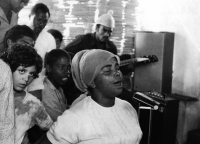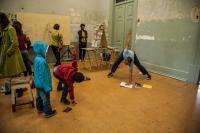resistance
Articles tagged with resistance
Tag Archive
- 1:54
- 2016
- 25 april
- african arts and crafts
- African photography
- african screens
- Afrique
- Alqueva
- Amadou Diallo
- América
- angola music
- angolan music
- anti-semitism
- antifa
- Argélia
- artists
- artworks
- As Cidades Invisíveis
- Ateler Mutanba
- audre lorde
- beirut
- Benjamin Lebrave
- Biennial – S. Tomé
- biografia
- Boaventura Sousa Santos
- Brasil
- Camaroon
- Carlos Correia
- Carlota de Barros
- collector
- colonial memory
- communities
- Cova da Moura
- crio
- criolo
- cultural
- Danijoy Pontes
- Deleuze
- democratic participation
- développement
- discoveries
- emancipação
- émancipation
- epistemologia
- esse cabelo
- favela
- Filipe Mukenga
- freedmon
- games without borders
- gender
- gente de cor
- George Floyd
- Goa
- Haile Gerima
- hair
- Haiti
- história
- historicism
- ideologia
- informal city
- intersectionality
- Jomo Fortunato
- kilimanjaro
- Kurdish people
- L'Internationale
- LGBTI
- Ligue arabe
- Lumumba Square
- luso-tropicologia
- lusofonia
- Mamadou Ba
- mental health
- mexican
- Mickey Fonseca
- Migration and Development
- Museu afro-brasileiro
- museu da descoberta
- Neocolonialism
- our lady of the chinese shop
- periphery
- Plant Revolution!
- Portuguese Colonialism
- post-colonial
- progressive academia
- racist
- reeducation camps
- Roman Mars
- RUI MAGALHÃES
- Sarah Maldoror
- Senhor dos Milagres Escravo de Angola
- Sérgio Afonso
- Statement
- Stone
- story
- Tahir Square
- The Sudanese Revolution
- utopia
- Viriato da Cruz
- women
- yanomami
 How a music shaped by slavery, epidemics, famine and mass migration travelled the world, narrating stories of suffering and resistance. Over time, morna, also known as “música rainha” (“queen music”), underwent several changes to its melodic and rhythmic characteristics, becoming the slower, more mournful version heard today. Characterised by three dimensions of melody, poetry and dance, morna is often sung in Kriolu, Portuguese-based Creole, though it can be instrumental, too.
How a music shaped by slavery, epidemics, famine and mass migration travelled the world, narrating stories of suffering and resistance. Over time, morna, also known as “música rainha” (“queen music”), underwent several changes to its melodic and rhythmic characteristics, becoming the slower, more mournful version heard today. Characterised by three dimensions of melody, poetry and dance, morna is often sung in Kriolu, Portuguese-based Creole, though it can be instrumental, too.  The subtitle of this issue works both ways: practices of resistance and spaces of invention, practices of invention and spaces of resistance. Even if we think in terms of productive power relations, we still use the word “resistance” in reference to those practices and spaces that emerge in moments of antagonist tension: e.g., when measures imposed by governmental institutions and the lack of perspectives for the future are individually and collectively felt as being oppressive.
The subtitle of this issue works both ways: practices of resistance and spaces of invention, practices of invention and spaces of resistance. Even if we think in terms of productive power relations, we still use the word “resistance” in reference to those practices and spaces that emerge in moments of antagonist tension: e.g., when measures imposed by governmental institutions and the lack of perspectives for the future are individually and collectively felt as being oppressive. 